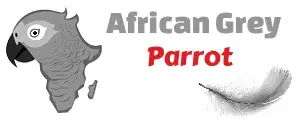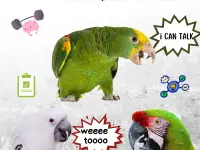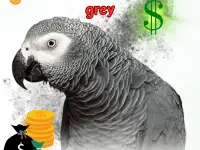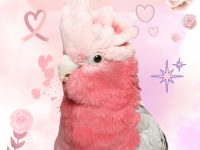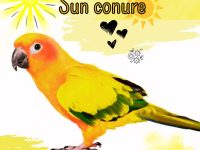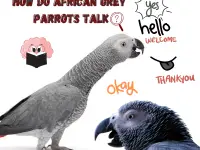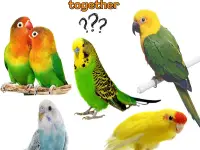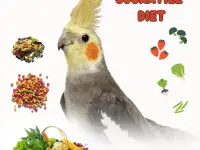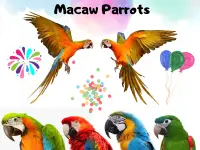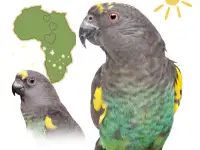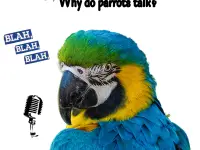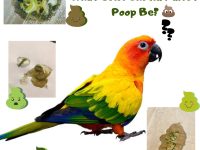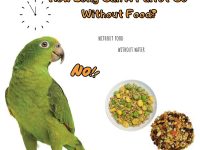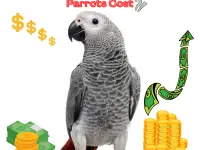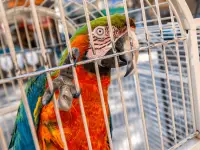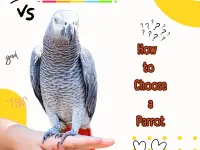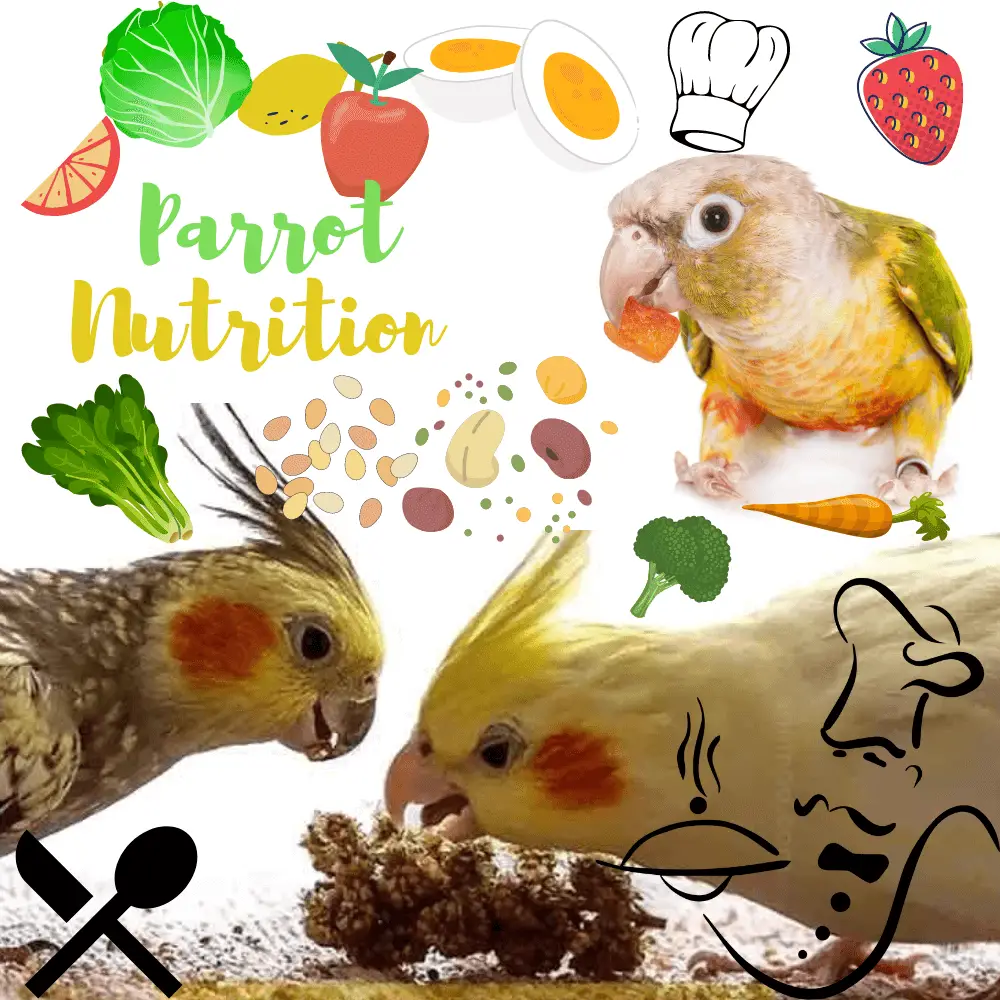
Parrots Nutrition: Different species of parrots that we keep in captivity are of very diverse origins, whether they are canopies in tropical forests, Australian savannahs, or the foothills of the Andes. They are therefore adapted to equally varied diets, which can also change according to the seasons.
It is impossible for us to reproduce exactly the natural diet of these species in captivity. This would not be advisable, since the needs of a bird in its natural environment are not at all the same as those it may have in captivity.
For the past 20 years, research in avian nutrition has supported the development of feed formulated in the form of feed. These make it possible to offer a balanced diet with the essential elements at levels adapted to our pet birds. In addition, they prevent our birds from preferentially selecting certain foods (especially high-fat seeds), a very common practice!
Several brands of feed are available to you. Look for a feed whose brand has been well-established for several years. Check the expiration date at purchase, and monitor the freshness of the product by smelling it regularly, as the feed can go rancid. Keep it in a cool, dry environment to keep it longer. Feeds are sold in different shapes and sizes; Choose the one that best suits your bird’s eating habits (a small bird may prefer a feed for large birds if it likes to hold food in its paw to nibble it). It is best to choose a feed that does not contain additives or dyes.
The feed should make up 60-80% of the diet of most parrots. For small parrots and parakeets, which are almost exclusively granivorous in their natural state, we recommend a ratio of about 50% feed. For these birds, the rest of the diet is mainly composed of non-oilseed seeds such as millet (sunflower seeds are rich in fat and should be given in limited quantities.
The rest of the diet consists of a variety of fresh vegetables and fruits, and ‘healthy’ table food. Yellow and orange vegetables (squash, sweet potatoes, carrots, pumpkin, chilies) and dark green leafy vegetables (cabbage, lettuce, arugula, herbs) are recommended. Berries, tropical fruits, pomegranate apples, apricots, oranges, and kiwis are some examples of fruits that your bird can enjoy.
It is especially necessary to vary the preparation of food. They can be offered raw: whole (a whole squash with a small “window” cut off provides a source of play and physical activity while the bird shreds it in addition to providing nutrients), in strips in a “bunch”, in large or small pieces. Food can also be cooked and prepared in soup, stew, puree, etc. alone or in combination.
The more diverse the presentation of food, the more the bird’s natural curiosity is encouraged and the more likely it is that it will try and enjoy it. Whole grains, whole grain products, and legumes are good starchy choices but should be limited to birds predisposed to being overweight. Animal protein can also be offered in limited quantities in the form of fish and lean meat. Table food quickly perishes and should not be left in the cage for more than 4 hours. Avocado, rhubarb, and chocolate are toxic.
Seeds can be offered, but should not make up more than 20% of the diet for large parrots. It is also possible to offer a variety of nuts, such as walnuts, almonds, pecans, or hazelnuts. These are high in fat and are not recommended for birds at risk of being overweight.
Any dietary changes should be gradual and monitored. A sudden change can promote anorexia and can have serious consequences. Please consult your veterinarian to build a feeding plan adapted to your bird.
Important points
- Parrots in nature have a very varied diet consisting of various plant elements, supplemented with small animals and mineral elements.
- The effects of a seed-based diet are multiple: obesity, fatty times syndrome, skin disease, respiratory disease, eye disease, and kidney disease.
- The life expectancy of animals fed exclusively on seeds is divided by 2.
- Chocolate, coffee, tea, and meat are prohibited.
- Avocado, onion, rhubarb, and raw potato are poisonous.
- Some fruits and vegetables such as carrots, peppers, and corn are very popular with Psittacidae.
Parrots in nature have a very varied diet consisting of various plant elements (root, bark, leaf, flower, fruits) supplemented by small animals (insects) and mineral elements (clay). Food intake not only provides a nutritional function but also a social and interactive one.
It is now shown that a diet based on seed distribution is a totally inadequate diet, too rich in fat, very low in vitamins, and not allowing foraging.
The effects of a seed-based diet are multiple: obesity, fatty times syndrome, skin disease, respiratory disease, eye disease, and kidney.
The only beneficial effect lies mainly in the improvement of reproductive performance which has made the success of this diet among professional and amateur breeders.
On the scale of a pet parrot, this diet predisposes to a set of diseases that begins its life expectancy: a parrot that can live 50 to 60 years will most often die between 20 and 30 years.
Pellet education
The pellets make it possible to distribute a balanced diet, without sorting for the bird. However, most birds do not spontaneously eat the pellets. Education is needed. Here are some methods to support food conversion:
- We recommend leaving your usual seed-based diet for 20 minutes in the morning and then leaving only the pellets and vegetables for the rest of the day. Give the seeds back for 20 minutes at the end of the day if nothing has been consumed.
- You can pretend to eat the pellets or actually eat them (!) to promote imitation behavior.
- You can grind the seeds and granules into a mixture and then gradually increase the proportion of the granules to the seeds.
- It is advisable to try several brands of granules.
Parrot Diet
What does a parrot eat: Parrot Nutrition is an essential point in the daily management of parrots and the veterinarian has a key role to inform and advise the owner.
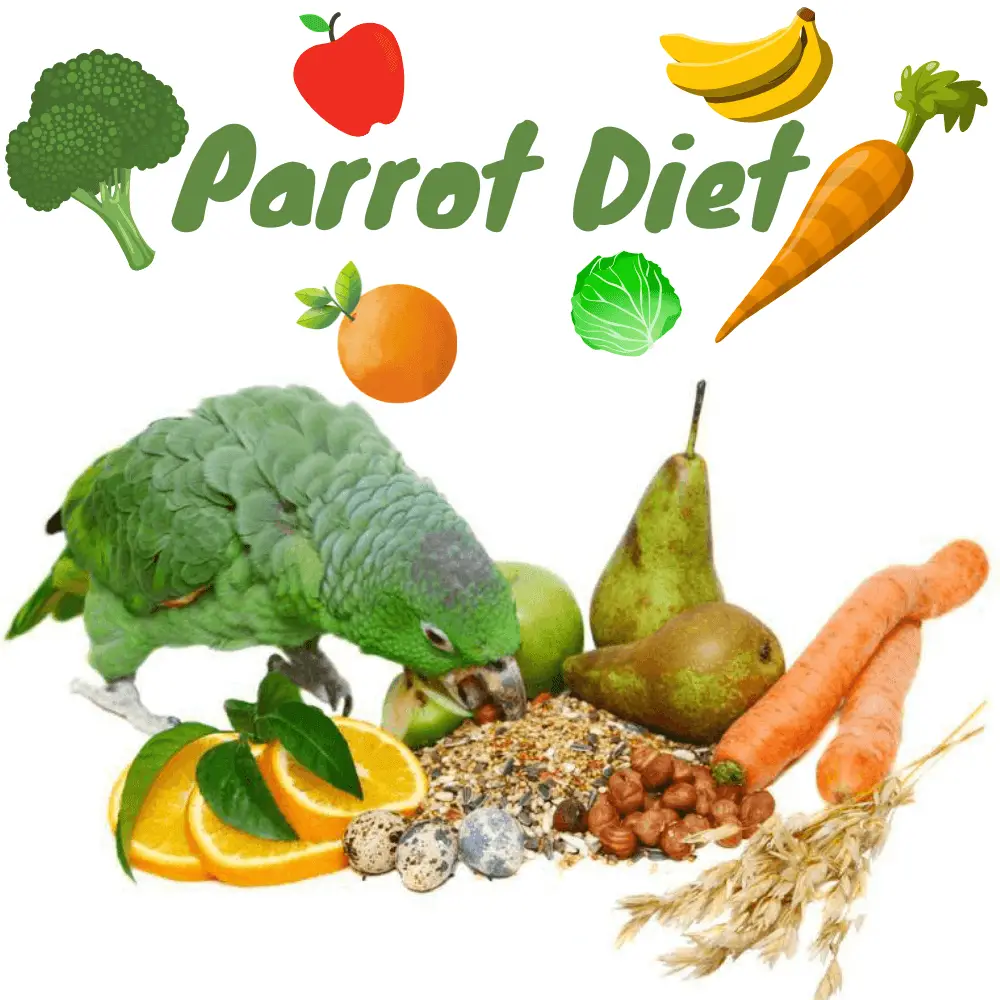
Parrots Nutrition
Indeed, people with a parrot often feed their animals with seed mixtures, and for different reasons: it is practical, cheaper than other types of food, the bird is in love, and this type of Parrot food is the most common in the trade.
Most French pet shops offer only mixtures of seeds on their shelves, thus depriving the owner of the choice of the type or quality of the food he wants to give to his parrot.
Many homeowners are convinced that the seed mix is the only food available, or even that it is the most suitable food for parrots. However, the majority of parrots are not exclusively grain-eating but also frugivorous (except for the Loris and Lorikeets which are nectarivorous and which we will treat separately) and a diet consisting solely of seeds is often the cause of many diseases.
With PV the live weight of the bird is in kg and MER is expressed in kcal / d.
For larger Psittacids, however, this formula seems to underestimate the energy requirements and must, therefore, be adapted to each bird.
The data concerning the food requirements of Psittacidae are therefore still too few since each species has its own needs. The veterinarian is often asked to extrapolate the data of already existing studies that best concern small Psittaciformes (M. undulatus or N. hollandicus) or Galliformes (hens, quails …). Table 5 below shows the recommended intake of a diet for Psittacine
Parrots Nutrition
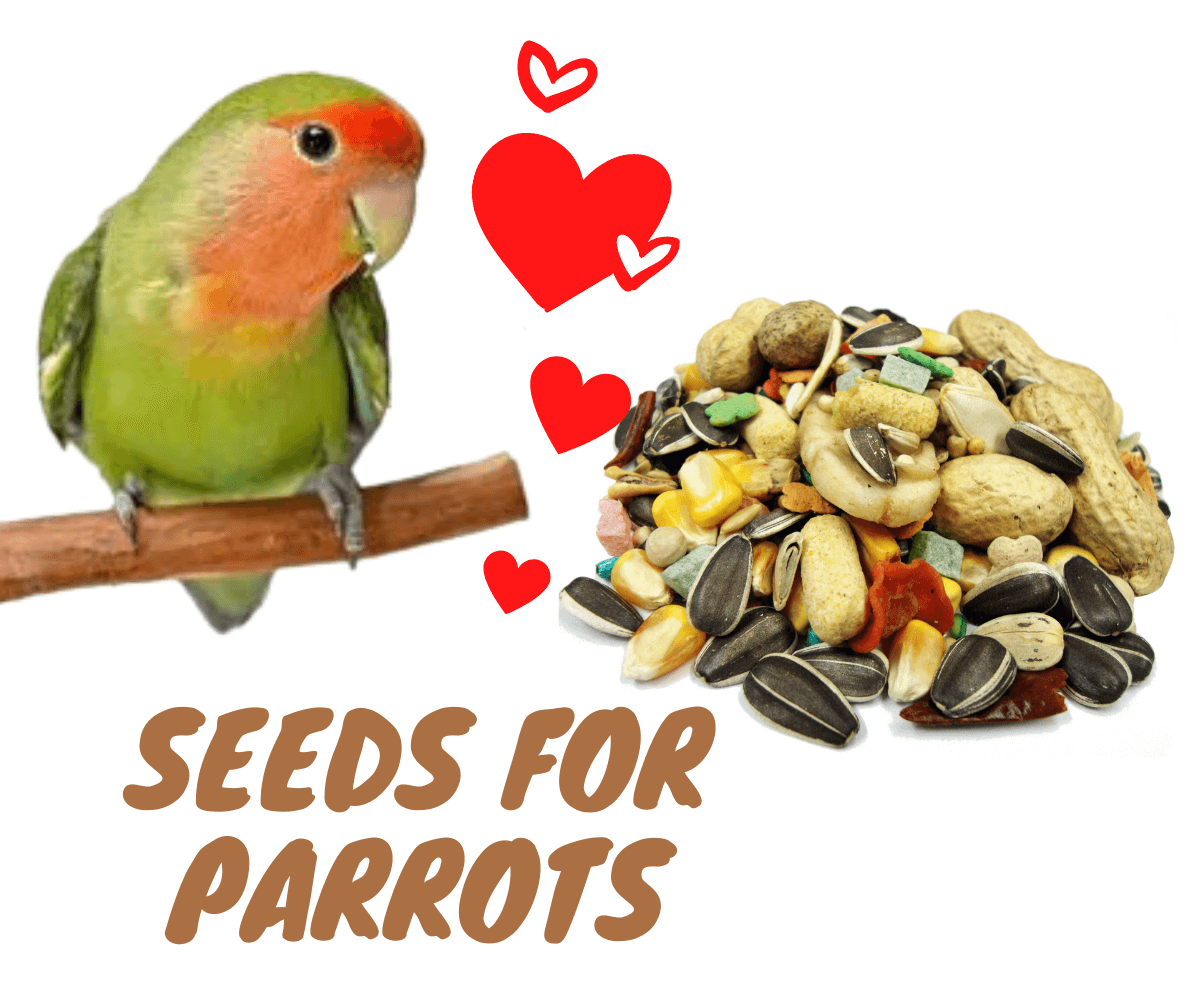
Seed for Parrots
Use the following as a guideline
- Wheat groats
- Canary
- Hemp seed
- Oats (whole)
- Pumpkin
- Sesame
- Spelled
- Sunflower
- Poppy
- Barley
- Buckwheat
- Corn
- Flax seeds
- Millet
- Milo
- Poppy
- Quinoa
- Rice
General considerations of parrot food and diet
To feed his parrot, the owner has different types of Parrot food in the trade group below:
Advantages of Seed Mixes for Parrots
- Affordable price
- Very readily available commercially
- In appearance very well consumed by the bird
- Ease of use
Disadvantages of Seed Mixes for Parrots
- Used alone, source of nutritional imbalances and resulting diseases (see details below)
- Obesity, dull plumage, poor beak growth (too long or deformed), stress sometimes associated with behavioral disorders due to metabolic stress
- In fact, the bird will choose the seeds he prefers, especially millet seeds, sunflowers, and peanuts, thus accentuating the imbalances of the ration
Extruded Granules For Parrot
All you need to know about extruded granules for parrot
Advantages of extruded granules food for parrots
- Avoid sorting
- Constant composition of vitamins and minerals
- Easy to use
- Less expensive than compressed granules
- Some are very colorful and therefore more palatable for some birds
Disadvantages of extruded granules food for parrots
Cooked under pressure at 140 ° C: the destruction of bacteria, vitamins, and natural flavors and modification of the structure of proteins and fibers that become more digestible (thus the acceleration of digestive transit of the bird)
- Important cost of manufacture is sometimes compensated by lower-quality raw materials
- Added synthesis elements to compensate for the deleterious effects of high-temperature cooking: vitamins, non-extruded fibers, artificial colors, etc …
- Conservation is shorter than compressed even if possible freezing
Fresh fruits and vegetables for parrot
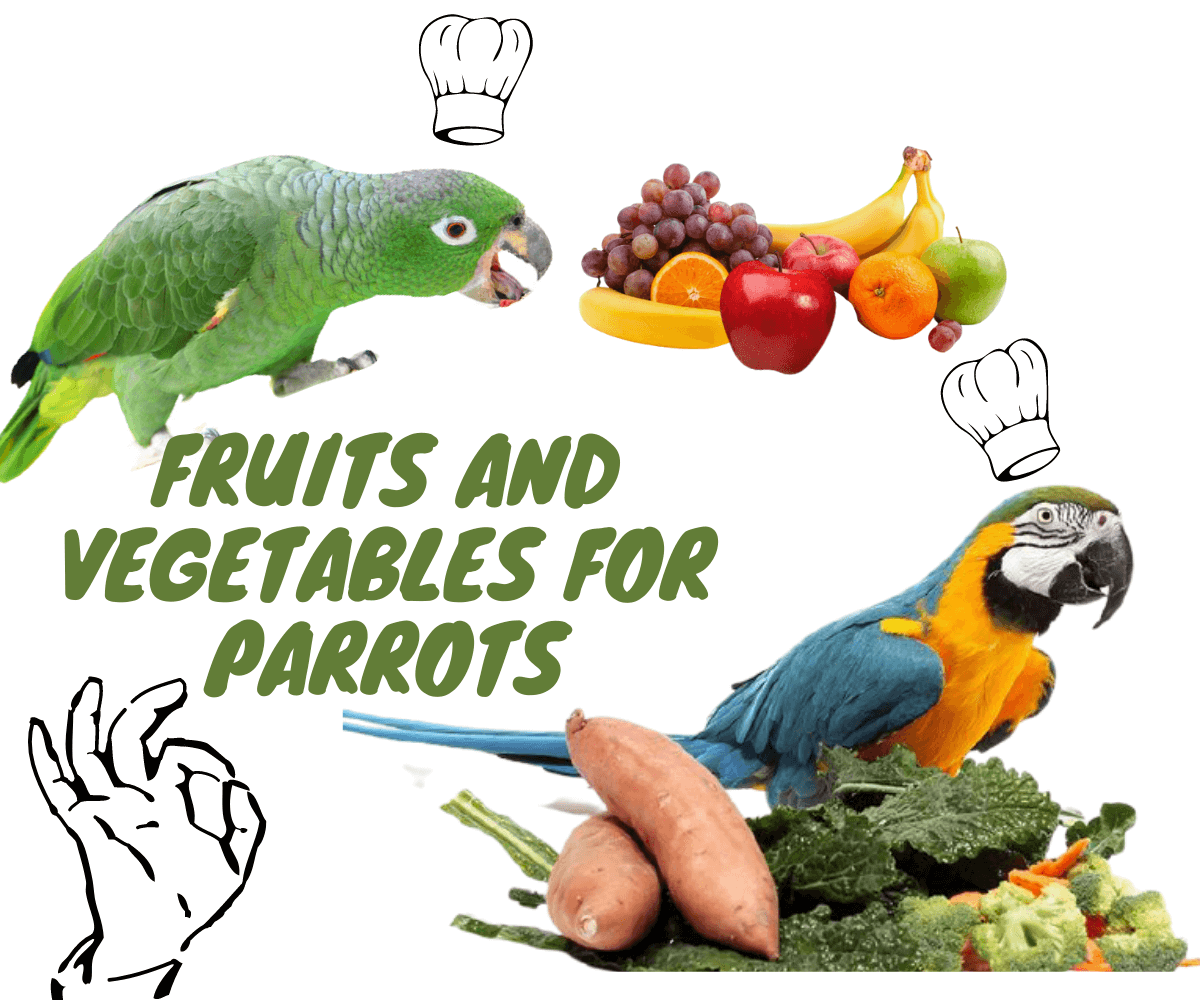
Parrots Nutrition
5 Fresh Fruits and Vegetables You Should Be Feeding Your Parrot
- Beans and Sprouts for parrots
- Carrots for parrots
- Melon for parrots
- Leafy Greens for parrots
- Blueberries for parrots
Advantages of Fresh Fruits and Vegetables For Parrot
- Supply of fresh nutrients (vitamins …) depending on the fruit or vegetable
- Health and energy all the time
- Ability to breed and nesting
- Help baby to grow up
- Father gets good colors
Disadvantages of Fresh Fruits and Vegetables For Parrot
- More work for the owner: cut according to the size of the bird, and remove the fruits after a few hours to avoid fungal and bacterial surface blooms …
- Attention to toxic fruits (avocado, etc …)
- Currencies energetics and minerals (especially calcium) if the bird is only fed with fruits/vegetables
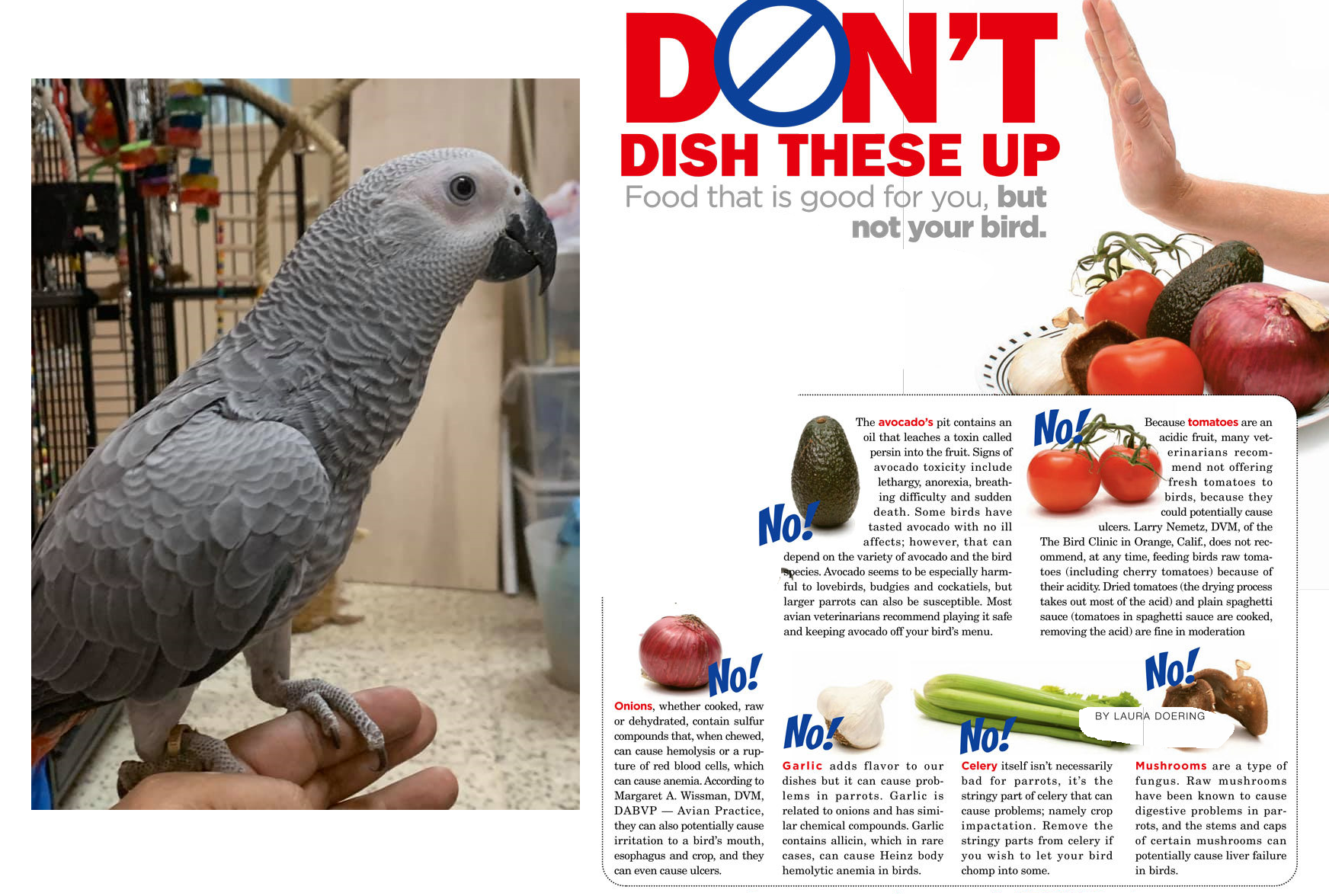
Toxic Poisonous Foods for Parrots
- Alcohol
- Apple Seed
- Avocado
- Caffeine
- Chocolate
- Dried Beans
- Mushrooms
- Onions
- Salt
The Truth About Parrot Seed
SOURCE:TheParrotTeacher
